How to Green Your Laundry Routine: Erica’s Top 5 Tips
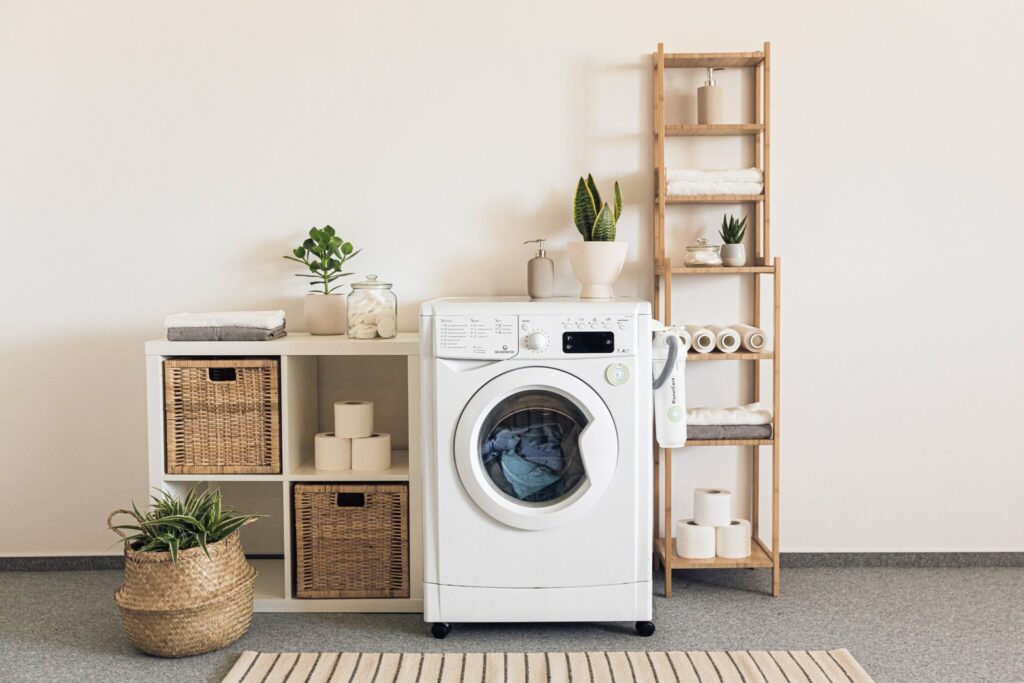
Laundry is one of those things that every adult has to navigate, whether that means you are hand washing your garments in a tub, soaking baby clothes in a sink, tossing workout clothes in your personal washing machine, taking weekly trips to the laundromat, or paying for luxury laundry pick-up services.
Laundry is also something that can quickly escalate your toxic load (think: laundry isle fumes and residue left on fabrics), not to mention your generation of waste (think: energy, water, plastic laundry bottles, etc.).
So what’s a guy or gal to do? Continue reading to learn my top 5 tip to green your laundry routine!
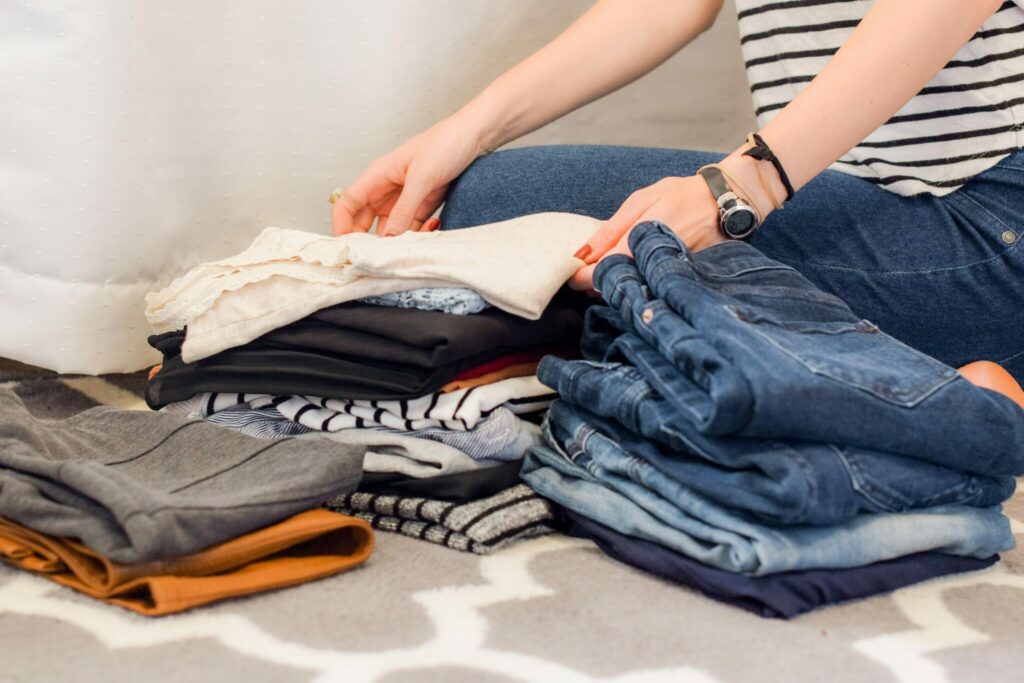
Tip #1 – Wash items only when needed!
Excessive washing not only generates unnecessary waste; it also increases wear and tear on your garments. Keep in mind that “excessive” is relative, however. Perhaps washing sheets twice a month sounds great for a single guy or gal who showers before bed each night, but is not suitable for a family whose kids are involved in outdoor sports a few nights a week. Look at your own lifestyle and decide what makes sense to you. Maybe that pair of jeans you only wore for half a day really don’t need to go straight into the dirty laundry hamper. Take the time to assess before you toss!
Note: This tip ties right in with our post on the 5 R’s of waste reduction! It also speaks to the standard of buying better, not more. Fast fashion often means low-quality, unethically produced items. When and where you can, support “forever in fashion” high-quality, ethically produced garments! (Buying from secondhand markets can be great for doing this on a budget!) Click here to see our clothing recommendations.
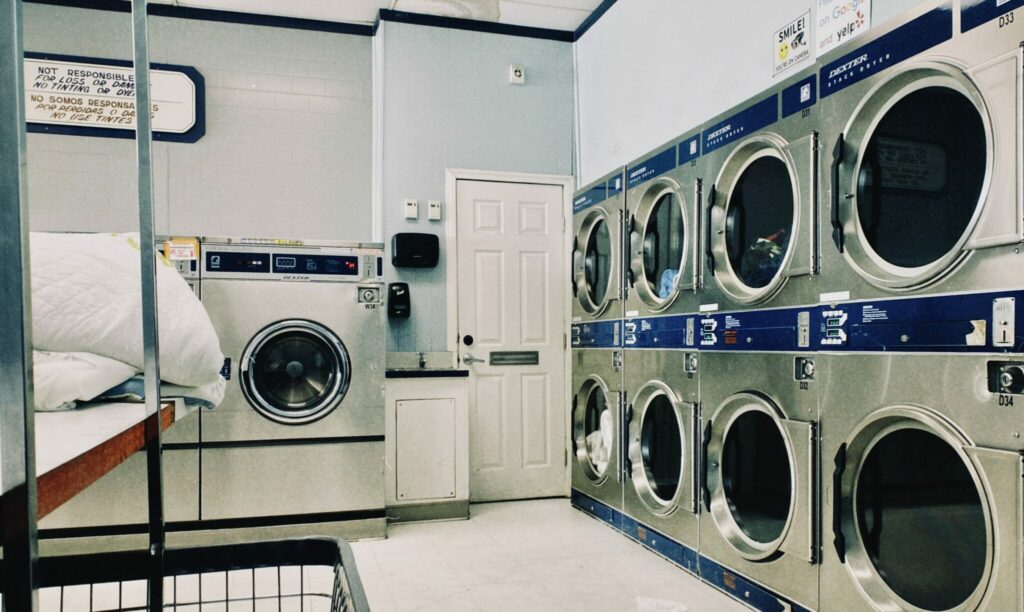
Tip #2 – Wash on the correct temperature.
Not all items wash best in warm water, or even cold water. I recommend you check the label on your items and wash them in as cold of water as is available. (If the label is missing or unclear, I recommend washing in cold water, particularly for colored items.) As a general rule of thumb, the colder the water, the less shrinkage and color fading occurs.
Here’s an interesting aspect to consider: A “cold” cycle does not necessarily mean the water is actually cold. It typically just means the water was not heated. In the winter, this could mean a frigid water temperature for the cold cycle. Why does this matter? Well, if you use powder detergent, your washing machine may have a difficult time dissolving it, leaving white residue streaks and insufficiently cleaning your garments.
What about for heavily soiled items or items with strong grease stains? These would be times when you might need to run a hot water cycle (and pretreat stains, too).
For example: To clean cloth diapers on a regular basis, we use Branch Basics concentrate for our detergent and add a scoop of their Oxygen Boost to the drum before adding the items. On our washing machine, we select the “Sanitize” cycle (very hot water), with an occasional “Extra Rinse” added. Once the cycle is over, we hang dry the diapers, inserts, and cloth wipes. I spray any items that are still stained after this first cycle with Branch Basic’s bathroom spray (just refers to the concentrate to water ratio) and placed in a bucket we fill with water and sprinkle Oxygen Boost on. After a few days, I place those stained items back in a regular load and 95% of the time the stains are fully removed after the extra steps.
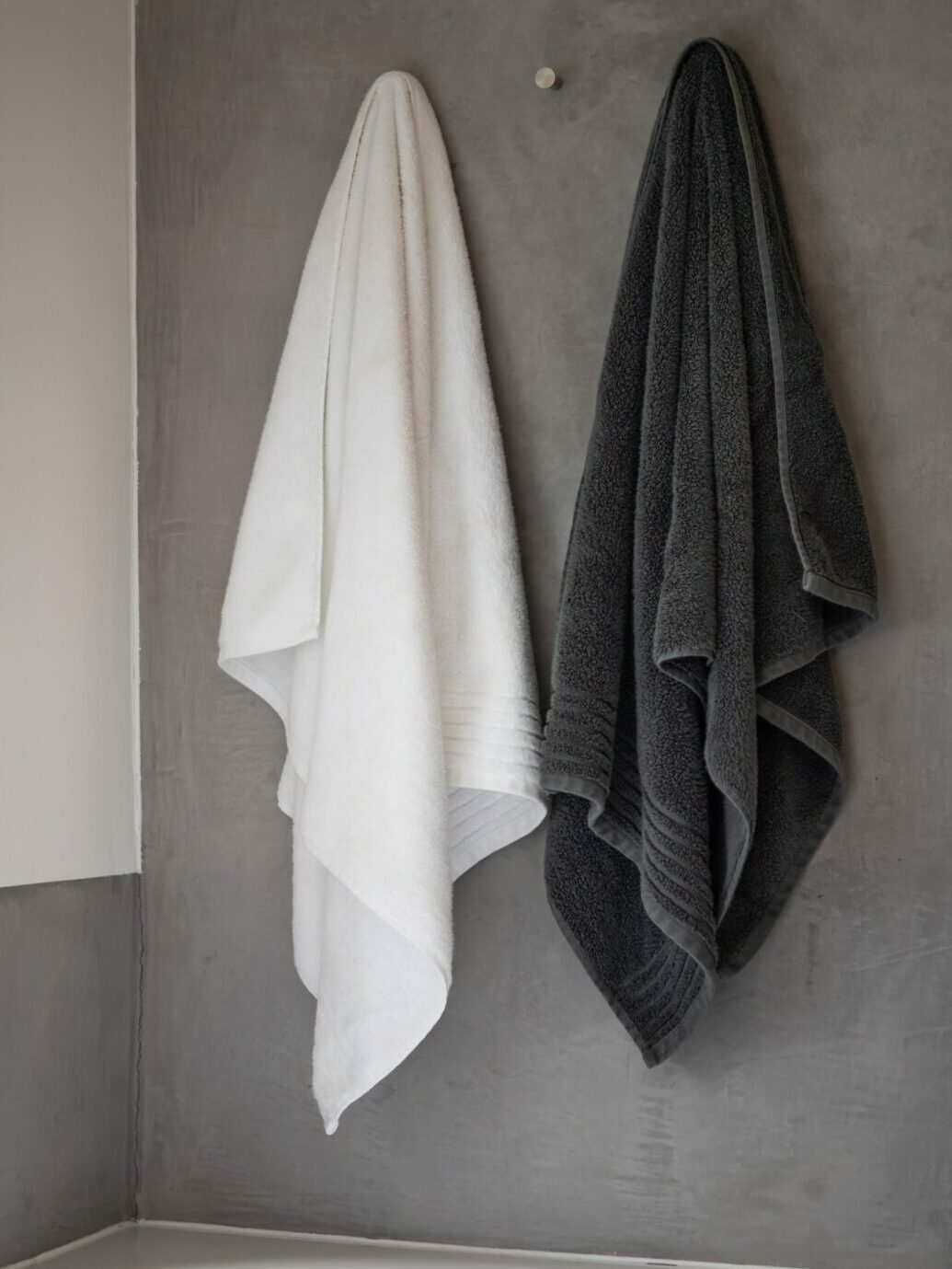
Tip #3 – Swap your conventional laundry products for their non-toxic alternatives.
Conventional laundry detergent, whitener, and fabric softener often contain some pretty toxic chemicals. Rashes, headaches, and endocrine disruption are some of the side effects individuals have experienced from the use of such products. Plus, all those plastic bottles and coated packets add up. Your call to action from this article? Toss the toxins and replace them with safer alternatives!
At our house, we use these swaps:
- Detergent – Branch Basics’ concentrate (at their suggested laundry dilution)
- Bleach/whitener – Branch Basics’ oxygen boost (which contains only sodium percarbonate and sodium bicarbonate–no bleach, ammonia, fragrances or dyes), placed in the drum before adding garments
- Fabric softener – organic apple cider vinegar (regular white vinegar works too), in our experience this also helps keep the washer from smelling moldy!
(If you are a first time customer for Branch Basics, this link will get you $10 off!)
If you want to find better choice laundry swaps in person or for a different online brand, I recommend using the Switch Natural app (one time $20 charge, check it out here) to scan the ingredients and take note of any red flags. The app is impartial to brands (it only analyzes ingredients) and works for personal care items, as well as other household items such as toothpaste and shampoo.
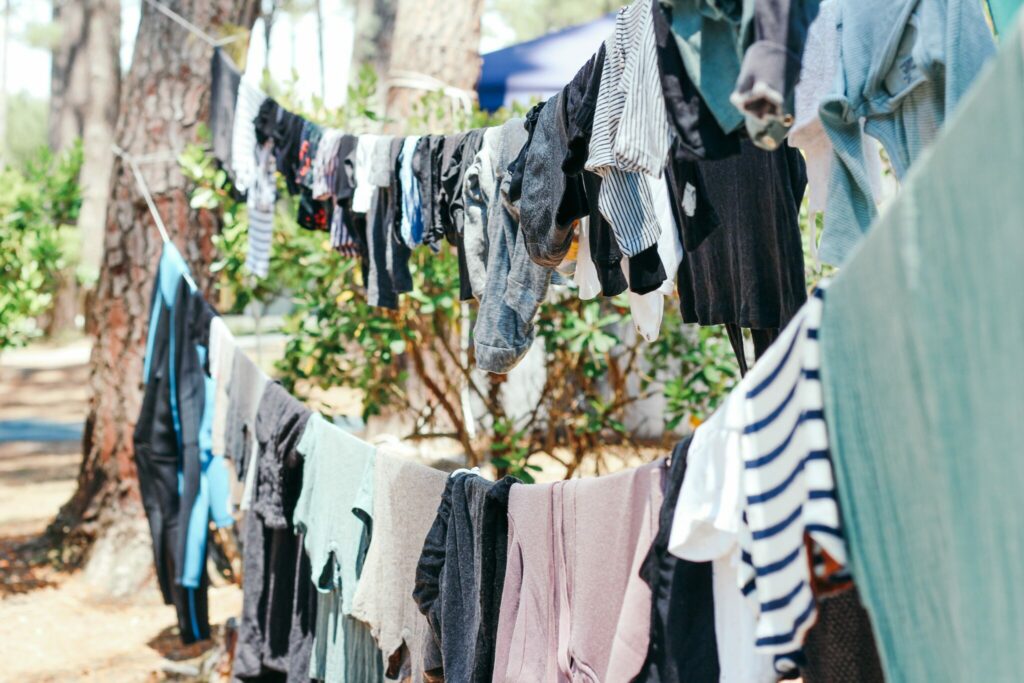
Tip #4 – Hang dry clothing instead of using the dryer.
Hang drying clothing may sound old fashioned, but it is an excellent way to cut down on electricity usage, as well as minimize shrinkage and reduce the wear and tear on your clothing.
Think about all the lint that you have to remove from the lint trap after each load. That lint is made up of fibers from your garments. Talk about wasteful!
In our day and time, there are many options for line-drying. I have experience using quite a few of them. Here are a few I have tried, along with a notation of pros and/or cons for each:
- string tied between two trees (probably the most economical; adjustable for height and length; other options are fence or stair posts, T-posts, columns, securely attached hooks on two parallel walls, etc.; watch out for munching squirrels and birds flying overhead if you set up outside…you know what that can mean!)
- folding wooden drying rack (buy quality and it will last a lifetime; great at saving space since you can fold up and move it when not in use; can hang a lot of garments in a small amount of space; can move in front of a vent or window for quicker drying if needed; not great for larger items like blankets or sheets)
- wall mounted folding drying rack (come in different lengths; can be mounted low for easy access or high to hang longer items or add a second rack underneath; not moveable and therefore you have to commit to a larger amount of space when it is open; in our experience they are handy to have for smaller loads and the occasional heavy-weight item since the rods are stronger than some of the other options on this list)
- retractable laundry lines (indoor and outdoor options available; space saving and low mounting footprint; easy to install; can line up multiple retractable lines near each other; easy to pull out and retract after each use)
While we do still typically dry our towels in the dryer and run an occasional load of clothes if we get behind on laundry or need to quickly de-wrinkle Z’s work clothes, line-drying is our go-to and has been for almost seven years now! If you are new to hanging your laundry to dry, you might find value in these articles:
- https://www.farmersalmanac.com/line-drying-clothes-53644
- https://farmingmybackyard.com/sunshine-im-line-drying/
- https://farmingmybackyard.com/line-dry-clothes-indoors/
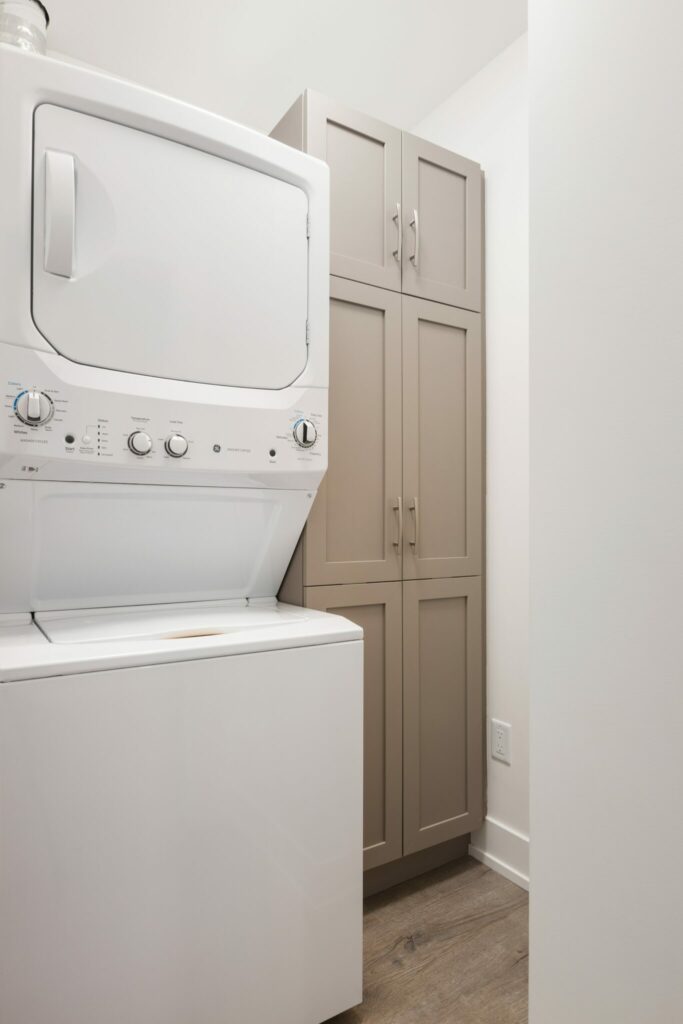
Tip #5 – Swap your dryer sheets for dryer balls.
Dryer sheets are a big no-no at our house. In addition to the awfully strong fragrance added (for which the ingredients never seem to be disclosed–red flag!), dryer sheets often coat your fabrics and the inside of the dryer over time. This can lead to that greasy build-up feeling on garments and impair the sensors inside the dryer.
Instead of using dryer sheets (even “eco-friendly” ones), try wool dryer balls. Wool dryer balls are made up of one thing–wool! They last 3-5 years on average, and you can compost them at the end of their life.
How do wool dryer balls work? Wool dryer balls absorb moisture and allow for space in between clothes (which means better air circulation and rotation). Using balls allows you to reduce heat settings and speed up drying time from 10-25% depending on the size of the load and how many dryer balls you use (3-6 is a general recommendation). If you decide to go this route and purchase wool dryer balls, this article shares some tips for sourcing wool dryer balls.
Greening your laundry routine does not have to be complicated.
Implementing just one of these tips can make a big impact over time. Reduce your toxic load, decrease your generation of waste, and save money — sounds like a win to me!
As an added bonus, if you have your own washer and/or dryer, here is an article with tips for stewarding your washer and dryer that you might enjoy reading!
I would love to hear about your experience with greening your laundry routine. Have you found any other solutions that have helped you become a better steward of your garments or washing machine/dryer? Comment below to share with our community!
Yours truly,
Erica Barlow
Erica Barlow


 The Five R’s: Practical keys to waste reduction!
The Five R’s: Practical keys to waste reduction!